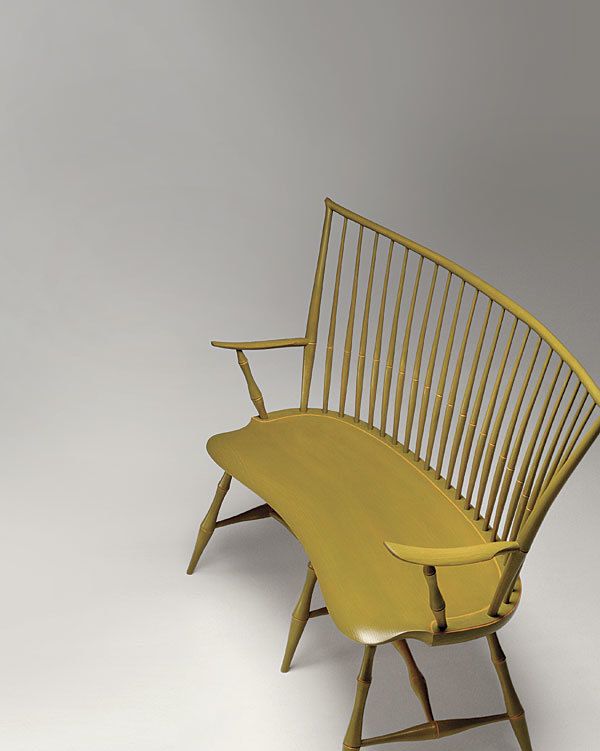Stretching the Windsor Tradition
Windsor maker moves his craft beyond traditional with this curved settee.

Synopsis: Peter Galbert had spent years building Windsor chairs when he decided to push the design into areas that were unexpected. This curved settee is one result of his explorations. Like a traditional Windsor, the seat was the starting point for the design. Once he worked out the shape of the seat, the rest of the elements fell in place around it.
When I first delved into green-wood chairmaking from a life in cabinets and tables built mostly by machine, it was clear that I’d found my way to the work that I had been looking for. It wasn’t so much the Windsor aesthetic that drew my interest as it was a desire to work quietly and closely with the material and tools. Once I began working primarily with hand tools, splitting logs and using steam bending, the road seemed to open in front of me.
I then spent years building traditional Windsor chairs to hone my skills and understand the techniques. Soon, curves and angles that had seemed taxing in my former world of sheet goods and milled lumber became easy to conceive and execute. But I wanted to push the design end, to make chairs that were less expected, yet still rooted in the brilliant Windsor technology. In the spring of 2008, when I was invited to enter a piece into a show at the State University of New York at Purchase, it seemed a great opportunity to try some of the ideas that had been percolating as I built traditional chairs. I’d seen a curved settee in a book on Windsor chairs years before, and the notion had been knocking around in my head ever since. I thought it would be fun to build my own curved settee. For me, new chairs usually go through an evolution of multiple prototypes, but with the show just a few weeks away, I had no choice but to nail down the settee design quickly.
As with most of my chairs—and Windsors in general—the settee’s structural anchor was the seat, and that was also the starting point for the design. The only concept sketch I did was from directly above; I figured that the shape of the seat was such a dominant feature that all the other elements would fall into place around it. Once I had worked out the shape, it was a matter of finding the angles of the legs and posts that join to it. Chairs built this way end up being a kind of puzzle, with certain key elements, such as the side posts, dictating the general shape, and the rest of the parts connecting the dots. In building traditional pieces I’d acquired a toolbox of techniques that made this clear, and as I made my way through the settee, each step and result seemed very natural and obvious.
Some new challenges did present themselves, such as the curved stretcher system beneath the seat. To find the geometry of the joints, I made a full-scale drawing showing the stretchers that run from the front legs to the back legs. Then I was able to map out the curve of the center stretcher.
For the full article, download the PDF below:
Fine Woodworking Recommended Products

Sketchup Class


Blackwing Pencils








Log in or create an account to post a comment.
Sign up Log in